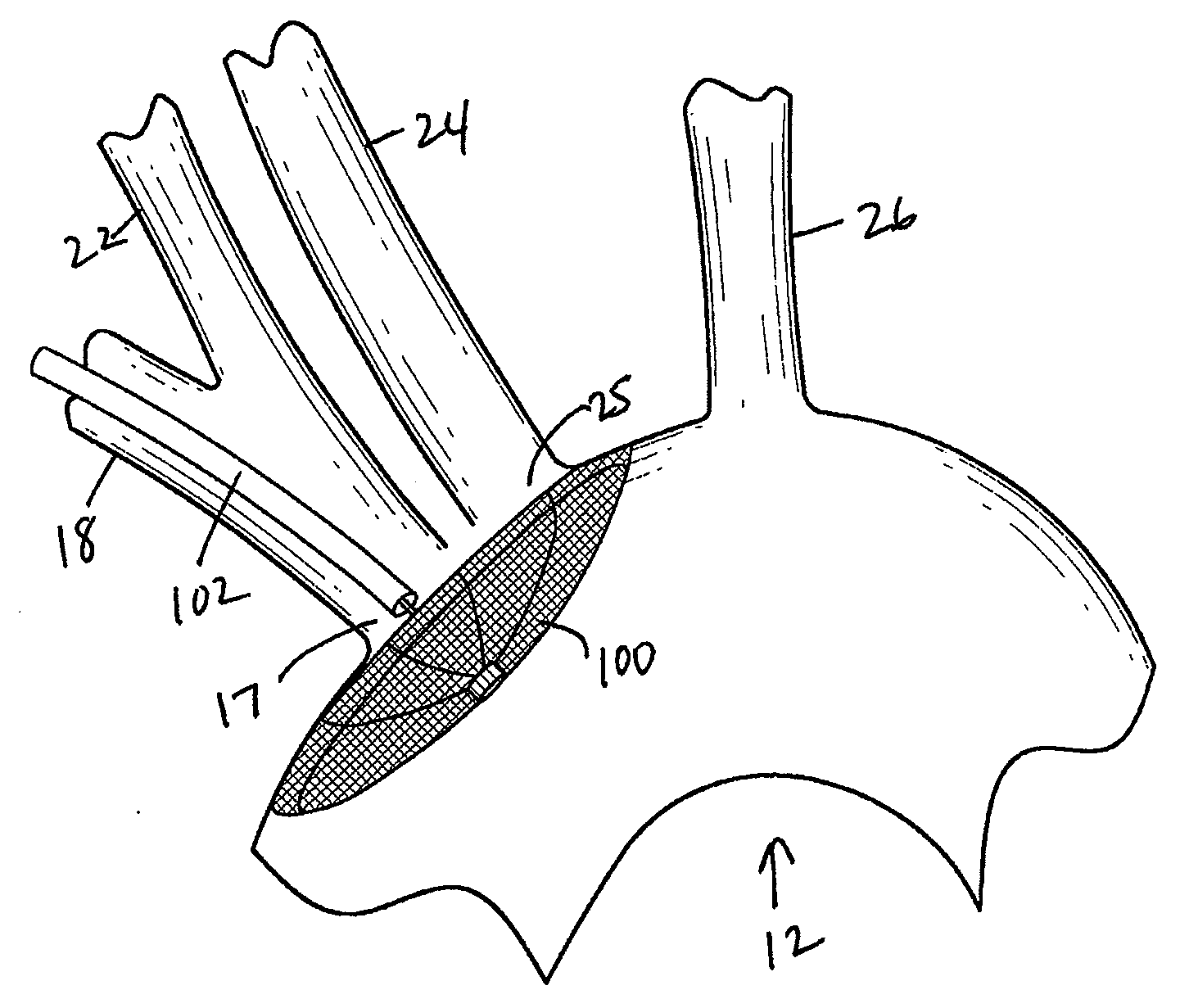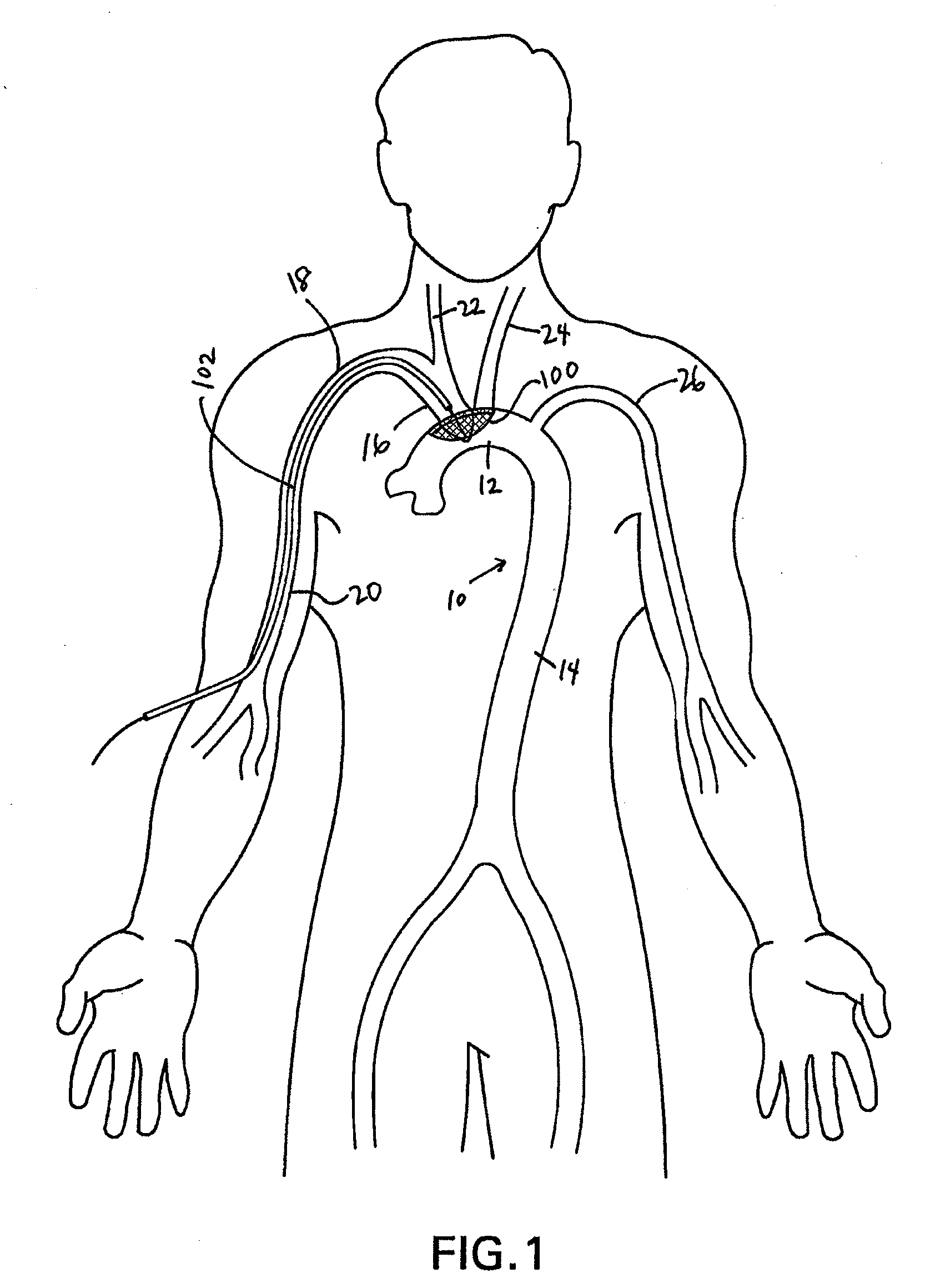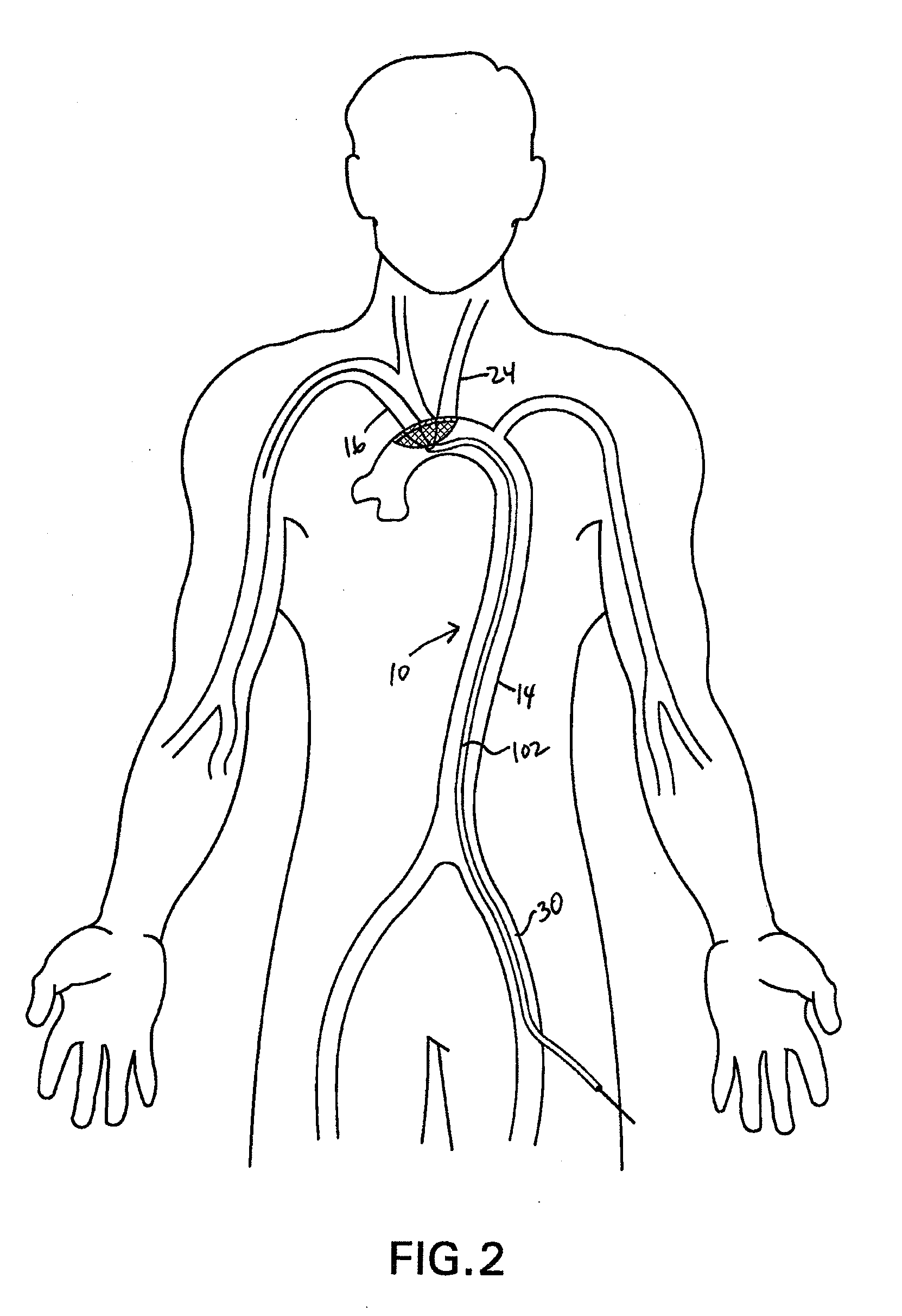Methods of deploying and retrieving an embolic diversion device
a technology of embolic diversion device and embolic debris, which is applied in the field of systems and methods for deflection of embolic debris, can solve the problems of both carotid arteries at risk of emboli, stroke or even death, and carotid emboli, so as to reduce the risk of emboli entering and reduce the risk of emboli
- Summary
- Abstract
- Description
- Claims
- Application Information
AI Technical Summary
Benefits of technology
Problems solved by technology
Method used
Image
Examples
Embodiment Construction
[0050]Disclosed herein are embolic protection systems that includes a deflector, along with associated deployment and removal systems, that can advantageously prevent emboli above a predetermined threshold size from entering the cerebral vasculature that may be dislodged, such as during an index procedure, such as an operative procedure. As such, potentially life-threatening transient ischemic attacks or embolic strokes can be prevented. Conventional embolic filters are primarily configured to capture, retain and retrieve embolic material. In contrast, deflectors as disclosed herein are configured to deflect or otherwise divert embolic material to a location downstream (relative to the direction of blood flow in the vessel in which the deflector is deployed) of the deployed location of the deflector to a less critical region of the body rather than the brain and other tissues perfused by the carotid and vertebral arteries. Once downstream, the emboli can be acted upon by physiologic...
PUM
 Login to View More
Login to View More Abstract
Description
Claims
Application Information
 Login to View More
Login to View More - R&D
- Intellectual Property
- Life Sciences
- Materials
- Tech Scout
- Unparalleled Data Quality
- Higher Quality Content
- 60% Fewer Hallucinations
Browse by: Latest US Patents, China's latest patents, Technical Efficacy Thesaurus, Application Domain, Technology Topic, Popular Technical Reports.
© 2025 PatSnap. All rights reserved.Legal|Privacy policy|Modern Slavery Act Transparency Statement|Sitemap|About US| Contact US: help@patsnap.com



